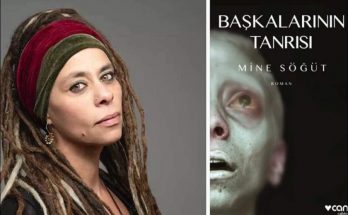Connection is the experience of oneness. It’s having shared experiences, relatable feelings, or similar ideas.
In his book Lost Connections, Johann Hari talks about his decades of work in the fields of trauma and mental health and why he believes that the root of almost everything we suffer through is a severed connection we never figured out how to repair.
At one point, Hari talks about an obesity clinic where patients who were overweight to the point of medical crisis were put on a supervised liquid diet in an effort to try to save their lives. The treatment worked, and many of the patients walked out of the clinic hundreds of pounds lighter and with a new lease on life—at first. What happened later was a side effect no doctor predicted. Some of the patients gained back all the weight and then some. Others endured psychotic breaks and one died by suicide.
After looking into why many of these patients had such adverse emotional reactions, the doctors discovered something important: The time when each patient began overeating usually correlated with a traumatic event they had no other coping mechanism for. Hari summed up the findings like this: “What we thought was the problem was very often a symptom of a problem that nobody knew anything about.”
Of course, the implication is not that every single overweight person is suffering some kind of subconscious trauma. The point is that many of the ongoing problems we cannot resolve are, in fact, symptoms of deeper problems we may not be aware of. In fact, Hari analogizes this to the smoke of a burning house: You can keep waving away the clouds, but without putting out the fire, your efforts will be futile.
The biggest problem in most people’s lives is trauma, and trauma is what creates a damaged ability to connect with others. “Trauma” is not a term reserved for the most severe and unrelenting atrocities one can experience. Anytime something scares us and we do not get over that fear, trauma is created. When we don’t believe we have the resources or abilities to cope with a certain problem or stimuli, we create adaptive behaviors to deny or avoid it.
It’s not the trauma itself that causes the most long-term damage; it is how the trauma wreaks havoc on the psyche and prevents reintegration into a normal, healthy life where other people and unknown situations are seen as benevolent.
You’ve probably heard this before in different ways: The opposite of addiction, is not sobriety, it’s connection. The foremost pillar of happiness is a sense of belonging and purpose. Cultures that are more communal are more mentally healthy as a whole. People who are alone often die earlier and get sicker before they do.
We are a tribal species. There is no way around this despite what many highly individualistic cultures may want us to believe. No person is an island unto themselves. We are born through connection, and it is through connection to others that we accomplish virtually everything else in life. We do not just prefer healthy relationships; we need them.
Connection is so important, but it is so often overlooked and there are few resources available to teach people how to foster real connection in their lives. But there are a few essential ideas that can help.
Understanding what connection is
Connection is the experience of oneness. It’s having shared experiences, relatable feelings, or similar ideas. It is the feeling of belonging to something greater than oneself. When you’re watching a sporting event with your friends, you’re experiencing connection. When you gather with your family for dinner or open up and express your authentic feelings to another person or find you have something in common with someone, you’re experiencing connection.
We’ve developed a world designed to create more connection than ever before, yet somehow, much of the digital age has severed connection or fostered inauthentic connection—which does not work. You cannot feign oneness. It is not something you intellectualize. It’s something you feel.
Learning to connect with others authentically
Authenticity is required for connection. The internet and social media do not disconnect us because we are glued to our phones at the dinner table but because they increase our ability to be inauthentic. They allow us to gloat, edit, filter, and post a highlight reel. We can construct a façade of our lives that may or may not be an honest reflection of reality.
In this, we breech connection. People who have authentic connections over social media report having a largely positive view and experience of it. People who use it as a genuine way to stay in touch with others don’t report the same levels of anxiety and depression associated with its use. The reason people try to fake their way into being liked is that they confuse attention for connection—and they are not the same thing.
Giving connection, not neceiving it
In order to connect with others, we have to give them our time and honest feelings and ideas and have shared experiences and openness. We do not connect with others by trying to earn approval, awe, compliments, appreciation, envy, or superiority.
In the process of restoring a connection with others, we can realize that we actually create a connection with ourselves.
Most people believe a connection is something they earn by being “good enough” when it is really something they develop by being willing enough.
If healing is a return to wholeness, then healing from trauma is remembering that we can trust others, we can trust ourselves, and we can trust life. It is the reintegration into easiness, calmness, and the willingness to allow life to be as it is rather than trying to control how it’s perceived. It is not waiting for others to initiate or sustain that connection. It is our own willingness to try again, be vulnerable again, show up for others, reach out, and make ourselves an active part of our communities and families and friend groups.
In the process of restoring a connection with others, we can realize that we actually create a connection with ourselves. In being seen and loved for who we are, how we think, and what we feel, we learn it’s okay to be as we are.
If our core human need is to connect with others, then the most important part of healing our emotional wounds is allowing ourselves to open up again. It is simply our willingness to show up as we are, and our trust that we will be taken care of. It is our discernment to give our time and energy to those who respect and cherish it back. And, most importantly, it is the knowledge that even if we do have to go through the fires of life—as all of us do—we come out the other end stronger, clearer, and more ready to appreciate what we have.
Not unlike the Japanese art of kintsugi, where broken items are repaired and displayed with pride, our connections and reconnections are often strongest where we had to forge them ourselves.
Views: 436



